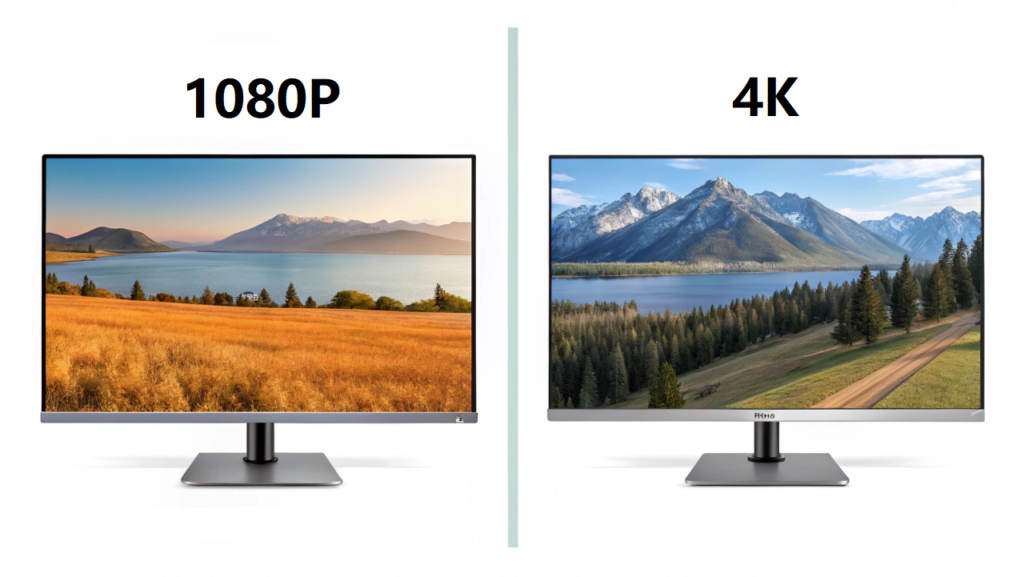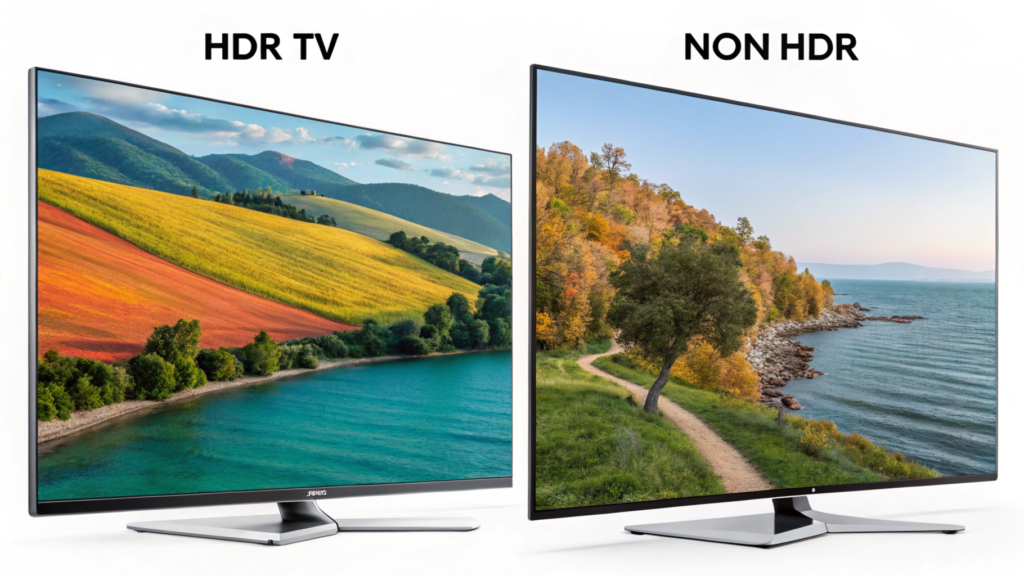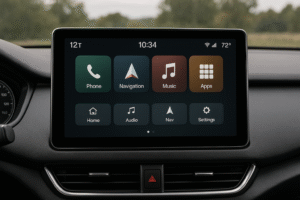The resolution of an LCD screen significantly influences its image quality. Higher resolution leads to sharper images with more detail, but its effect depends on several factors like screen size, pixel density, and viewing distance. Understanding these factors will help you make an informed decision when evaluating image quality and choosing the right display.
Does higher resolution always result in better image quality?

Higher resolution can indeed result in better image quality, but it depends on the specific use case. For instance, while 4K resolution offers more detail than 1080p, its impact is most noticeable on larger screens or when viewed from a close distance. On smaller screens or from a distance, the difference in resolution might not be as perceptible, meaning higher resolution could offer diminishing returns.
Key Factors Affecting Image Quality:
- Pixel Density (PPI): Higher resolution increases pixel density, improving image sharpness. A higher PPI means more pixels are packed into a given area, resulting in finer details.
- Viewing Distance: The closer you are to the screen, the more noticeable the resolution. On larger screens, like 50 inches and above, higher resolution becomes more beneficial, especially for tasks like gaming or detailed design work.
- Screen Size: On smaller displays (e.g., 13″ or 15″ laptops), even 1080p resolution can provide sharp images, making higher resolutions less critical.
Additional Considerations:
- Screen Size vs. Resolution: On smaller screens, higher resolution might not significantly improve image quality, as the human eye cannot discern finer details at a typical viewing distance.
- Real-world Benefits: For media consumption like movies or gaming, the benefits of higher resolution are more apparent, especially in action-packed or detail-oriented content.
How does resolution impact color accuracy and contrast?
Resolution can indirectly affect the perception of color accuracy and contrast. While these factors are more heavily influenced by the quality of the display panel (e.g., IPS vs. TN), higher resolutions can enhance the overall viewing experience by providing finer details in areas with subtle color gradations.
How Resolution Impacts Color and Contrast:
- Color Accuracy: At higher resolutions, screens often use better panels, which can improve color accuracy. This is especially true for IPS panels, which are commonly found in high-resolution screens. (Difference between IPS TFT and TN TFT)
- Contrast Ratios: A higher resolution typically means a better display technology, which can improve contrast ratios, though this is not always a direct relationship.
- HDR Support: High-resolution displays often come with enhanced HDR support, which improves the contrast between light and dark areas, further enhancing image quality. (What is HDR Technology: Local Dimming, Global Dimming)
What You Need to Know:
- Panel Type: Higher resolution displays are often paired with better panel technologies, such as IPS or OLED, which naturally have superior color accuracy and contrast compared to standard TN panels.
- Content Quality: The quality of the content you’re viewing also plays a crucial role. For example, 4K HDR content on a 4K screen will look far better than lower-resolution content on the same screen.
Can a lower resolution LCD screen still offer good image quality?
Yes, lower resolution screens can still offer good image quality, especially for applications that don’t require extremely fine detail. The key factors here are the pixel density and the quality of the panel, such as color accuracy and contrast, which can make a lower-resolution screen appear sharp and vibrant under certain conditions.
Important Considerations for Lower Resolution Displays:
- Pixel Density: A 1080p screen on a 15-inch laptop will have a higher pixel density than a 1080p screen on a 32-inch monitor, providing sharper images on the laptop.
- Display Technology: A high-quality TN panel with 720p resolution could still outperform a lower-quality IPS panel with 1080p resolution in terms of overall color reproduction and contrast.
- Use Case: For basic applications like web browsing or office work, a 720p or 1080p LCD can provide satisfactory image quality without requiring a high resolution.
Key Points to Keep in Mind:
- Work Context: If you’re primarily using the display for text-based tasks, the resolution may not need to be as high as for graphic-intensive tasks like gaming or video editing.
- Battery Life: For portable devices like laptops, lower resolution screens often consume less power, offering longer battery life while still providing sufficient image clarity for everyday tasks.
What role does pixel density play in image quality?
Pixel density, measured in pixels per inch (PPI), plays a crucial role in determining how sharp an image appears on the screen. Higher PPI leads to smoother images with finer detail, which is especially beneficial for viewing content with fine text or intricate graphics. As resolution increases, so does pixel density, which directly impacts the perceived sharpness of the display.
How Pixel Density Affects Image Clarity:
- PPI and Clarity: For instance, a 4K display on a 27-inch screen has a much higher PPI than a 1080p display on the same size, resulting in more detailed, sharper images.
- Pixel Grid: Higher pixel density reduces the visible pixel grid, preventing the screen from looking “blocky” or pixelated, especially when viewed closely.
- Device Size: For small devices, such as smartphones or tablets, higher PPI is essential to ensure a sharp image, as the screen is often viewed up close.
Additional Insights:
- Viewing Experience: Devices like smartphones, where you hold the screen close to your eyes, greatly benefit from high pixel density, as even small differences in resolution can be perceived.
- Screen Size vs. PPI: On larger devices like TVs or monitors, the pixel density can be lower, and the resolution might need to be much higher to maintain a similar level of sharpness.
How does screen resolution affect performance in gaming and video editing?

For gaming and video editing, higher resolution screens can significantly enhance the visual experience, allowing for greater detail, sharper textures, and more immersive environments. However, these tasks often require a balance between resolution, refresh rate, and graphical performance to achieve the best results.
Performance Considerations for Gaming and Video Editing:
- Higher Resolution in Gaming: Games on a 4K screen provide more detailed environments and sharper textures, making the gaming experience more immersive. However, higher resolutions demand more from the GPU.
- Video Editing: Higher resolution screens enable editors to view fine details in their work, improving accuracy, especially in color grading or fine-tuning footage.
- Graphics Card Requirements: For 4K gaming or high-resolution video editing, a powerful graphics card is essential to maintain smooth performance and prevent lag.
Essential Things to Consider:
- System Compatibility: A high-resolution display requires a powerful GPU to handle the increased demand. Lower resolutions, like 1080p, are often more manageable for mid-range graphics cards.
- Workflow Efficiency: In professional video editing, having a higher resolution monitor helps in viewing more timeline content at once, speeding up the workflow for tasks that require fine detail.
FAQ
Does resolution affect image quality more than screen size?
Resolution plays a significant role in image quality, but its impact is most noticeable on larger screens where pixel density becomes more crucial. On smaller displays, lower resolutions can still deliver good quality due to higher pixel density.
How important is pixel density in choosing an LCD screen?
Pixel density is crucial for sharpness, especially in smaller devices or when the display is viewed closely. A higher pixel density ensures that the screen remains crisp and clear, even at high resolutions like 4K.
Will I notice a difference between 1080p and 4K on smaller screens?
On smaller screens, the difference between 1080p and 4K may not be as noticeable, especially from a normal viewing distance. The higher the pixel density, the less difference you will see unless you are very close to the screen.





